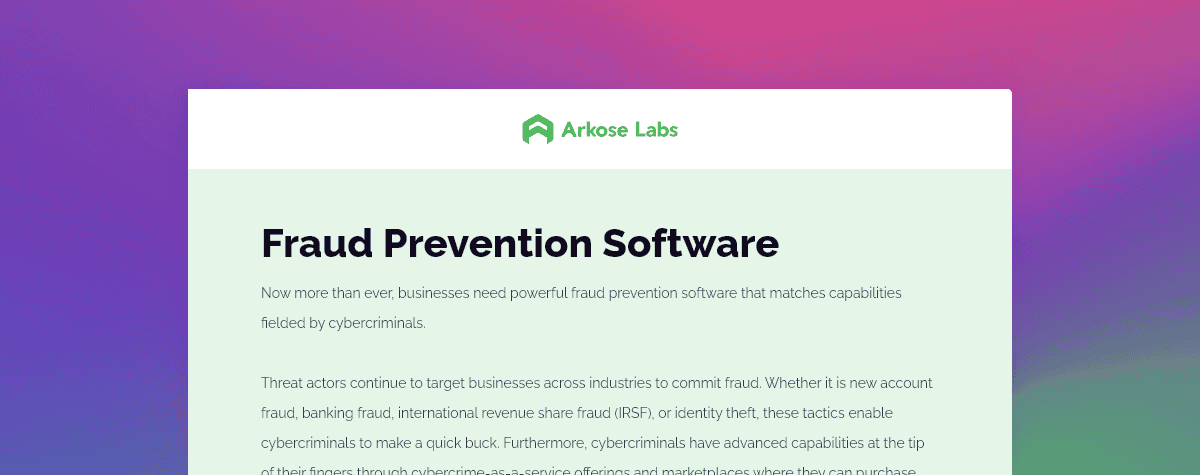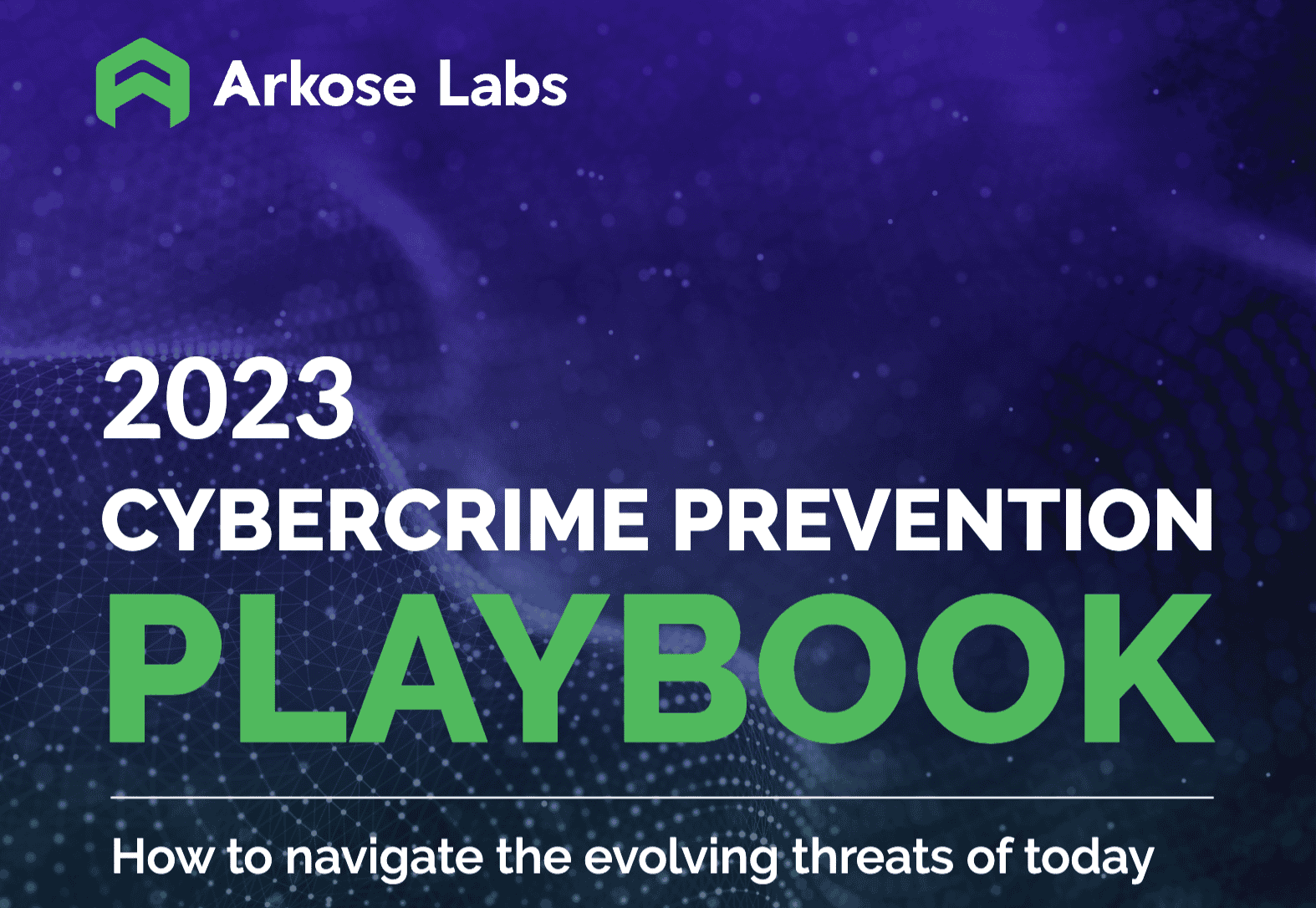Fraud is a pervasive threat to any organization's viability and sustainability, with fraudsters continually seeking innovative ways to deceive and steal from businesses. To protect themselves and their customers, it's critical for businesses today to have a comprehensive fraud risk management plan that identifies, assesses, and mitigates risks associated with nefarious cyber activities. Whether you're a small or large business, fraud is a major risk that needs to be addressed.
Check out Bad Bots & Beyond: 2023 State of the Threat Report for more information on the evolving threats of today!
Importance of Implementing a Fraud Risk Management Program
Fraudsters use several tools and tactics—such as bots, scripts, human click farms, and a combination of these—increasing an organization’s fraud risk. It is critically important to combat fraud and online abuse. Implementing a risk program is essential for organizations to protect themselves from fraudulent behavior leading to potential financial losses, reputational damage, and legal and regulatory sanctions.
A robust fraud risk management program can also promote a culture of ethics and compliance, which can have a positive impact on employee morale, retention, and competitive advantage.
Essential Components of a Fraud Risk Management Guide
An extensive fraud guide should include the following essential analytics:
- Risk assessment: The guide should include a framework for identifying and assessing potential fraud risks within the organization, such as financial statement fraud, asset misappropriation, corruption, and cybercrime.
- Response planning: The guide should outline the steps to be taken in the event of a suspected or actual fraud incident, including investigation, remediation, and reporting.
- Fraud risk monitoring and review: The guide should provide guidance on monitoring fraud risks and evaluating the effectiveness of the organization's fraud program.
- Continuous improvement: The guide should emphasize the importance of continuous improvement of the organization's fraud program, through regular review and assessment of the program's effectiveness and making necessary adjustments as needed.
How to Identify Different Types of Fraud
There are several key areas of possible fraud that organizations should be aware of when developing a risk management guide. Some fraud threats include:
- Phishing: Phishing involves sending emails or messages that appear to be from a legitimate source, such as a bank or a vendor, in an attempt to trick individuals into providing sensitive information or clicking on malicious links. Signs of phishing include suspicious email addresses, poor grammar and spelling, and requests for personal information.
- Malware: Malware is malicious software that is designed to damage or disrupt computer systems, steal sensitive information, or gain unauthorized access to networks. Signs of malware may include slow system performance, pop-up ads, and unexplained changes in settings.
- Social Engineering: This refers to the use of psychological manipulation to trick individuals into divulging sensitive information or taking certain actions. Signs of social engineering may include overly friendly or pushy behavior, requests for personal information, and attempts to establish trust.
- Internal fraud: Internal fraud refers to fraudulent activities carried out by individuals with authorized access to an organization's systems or information. Insider fraud can be intentional or unintentional and can involve activities such as stealing company data or funds, manipulating financial records, or leaking confidential information.
To prevent and detect insider fraud, organizations can implement measures such as access controls, employee training, monitoring and auditing of employee activities, and regular risk assessments to identify potential vulnerabilities and address them proactively. Other best practices include:
Conducting a Fraud Risk Assessment
Conducting a fraud risk assessment involves identifying potential fraud risks, fraud threats, assessing their likelihood and impact, and developing a strategy to prevent, detect, and respond to these risks. A risk management plan should be developed to address the residual risks identified in the assessment, primarily for the protection of company assets and customer data.
Building a Fraud Risk Management Program
Building a fraud program involves a series of steps to identify, assess, and mitigate external risks. Here are the general steps to building a fraud risk management program:
- Establish a fraud risk management policy: Develop a policy that outlines the organization's commitment to fraud prevention and detection, as well as the roles and responsibilities of key stakeholders.
- Conduct a fraud risk assessment: Identify the fraud risks that are specific to the organization, as well as the likelihood and potential impact of each risk.
- Develop and implement fraud prevention and detection controls: Implement a set of controls that are designed to prevent and detect fraud, such as segregation of duties, employee background checks, and whistleblower hotlines.
- Monitor and test the effectiveness of controls: Regularly monitor and test the effectiveness of your fraud controls to ensure they are operating as intended.
- Investigate suspected fraud incidents: Establish a process for investigating suspected fraud incidents and taking appropriate corrective action.
- Develop and deliver fraud awareness training: Provide fraud awareness training to employees to help them recognize and report fraudulent activity.
- Review and update the fraud risk management program: Regularly review and update the fraud risk management program to ensure it remains effective and relevant to the organization's evolving fraud risks.
Building a fraud risk management program is one of the most effective ways for organizations to establish proactive governance to manage fraud risks. These fraud programs should be tailored to the organization's specific threat risks and compliance requirements, and should involve key stakeholders at all levels of the organization, such as the board of directors and other executives.
Best Practices for Fraud Risk Detection
Businesses can take steps to prevent and detect cyberattacks and the risk of fraud by implementing best practices for cybersecurity and fraud prevention and detection. One key practice of fraud risk detection is to develop and implement a comprehensive cybersecurity policy that includes guidelines for secure passwords, access controls, data backups, system updates, and employee training on how to detect and respond to potential cyber threats and fraudulent activities. Regularly updating and patching software is also crucial to prevent vulnerabilities that cybercriminals can exploit.
Establishing reporting mechanisms for employees to report potential fraudulent activities can help the organization detect and respond to the risk of fraud quickly. Employees should also be trained on how to recognize and report suspicious activities or attempts to access sensitive data or systems. Regular security assessments can help identify and mitigate vulnerabilities before they are exploited, including vulnerability scans, penetration testing, and social engineering assessments.
By implementing data analytics and best practices (and regularly reviewing and updating their risk management policies), businesses can reduce the risk of cyberattacks and fraud, protect their reputation and assets, and comply with legal and regulatory requirements. Organizations looking to protect themselves should also consider.
Internal Controls in Fraud Management
Internal controls are policies, procedures, and systems that organizations implement to protect their assets, ensure accurate financial statements, and improve operations' efficiency. Internal controls play a crucial role, and segregation of duties is a key aspect. By separating responsibilities, individuals are not in a position to exercise too much control or access. Other controls include financial transaction monitoring, access controls, and regular audits and reviews.
While strong internal controls cannot completely prevent fraud, they can act as a deterrent and make it more difficult for fraudsters to carry out their schemes. Regular review and monitoring of internal controls can help identify weaknesses or vulnerabilities in the system and allow for continuous improvement to prevent and detect fraud.
Fraud Detection Techniques and Tools
To prevent fraud, companies should implement several tools and techniques. These include restricting access to sensitive data, regularly monitoring network activity, implementing multi-factor authentication, keeping software up to date, and providing ongoing training to employees. Additionally, companies can use fraud detection software and conduct regular vulnerability assessments to identify potential security gaps. By implementing these measures and staying vigilant, companies can reduce their risk of falling victim to cyber fraud.
Monitoring and Updating Your Fraud Risk Management Guide
A company's fraud risk management guide is not a static document. By regularly reviewing and refining your fraud prevention strategies, you can stay ahead of emerging risks and adapt to changes in your business environment.
This ongoing process helps ensure that your company is prepared to address any new or evolving threats to your financial security, reputation, and operations. It also allows you to continually evaluate the effectiveness of your existing controls and identify areas for improvement. Overall, monitoring and updating your fraud risk management guide should be viewed as an essential part of your company's ongoing efforts to protect itself against fraud and other forms of financial crime.
Our 2023 Cybercrime Prevention Playbook has more answers. Download today!
Arkose Labs for Fraud Management
As a leading bot management solution, Arkose Labs provides the ideal fraud management solution. Our technology leverages machine learning and human intelligence to detect and prevent fraudulent activities. Arkose Labs' platform uses a combination of supervised and unsupervised machine learning to analyze large amounts of data and detect patterns that are indicative of fraudulent activities. Arkose Labs leveraged machine learning to identify fraudulent activities in real time, preventing financial losses and protecting the reputation of organizations.
One of the key features of the Arkose Labs platform is its ability to identify fraud patterns that traditional rule-based systems may miss. Using unsupervised machine learning algorithms, Arkose Labs' platform offers the governance to identify new fraud patterns as they emerge, enabling banks to stay ahead of fraudsters' tactics.
Arkose Labs' platform also leverages artificial intelligence analytics to validate suspicious activities, ensuring organizations can implement a thorough fraud risk assessment. By combining machine learning with human intelligence, Arkose Labs can reduce the number of false positives, enabling organizations to focus their resources on genuine fraud cases. This improves the efficiency of fraud detection and enables organizations to respond to fraud incidents quickly, minimizing financial losses and protecting customers.
Book a demo today and find out how we can protect your business!

Fraud Prevention Software
- Importance of Implementing a Fraud Risk Management Program
- Essential Components of a Fraud Risk Management Guide
- How to Identify Different Types of Fraud
- Conducting a Fraud Risk Assessment
- Building a Fraud Risk Management Program
- Best Practices for Fraud Risk Detection
- Internal Controls in Fraud Management
- Fraud Detection Techniques and Tools
- Monitoring and Updating Your Fraud Risk Management Guide
- Arkose Labs for Fraud Management



